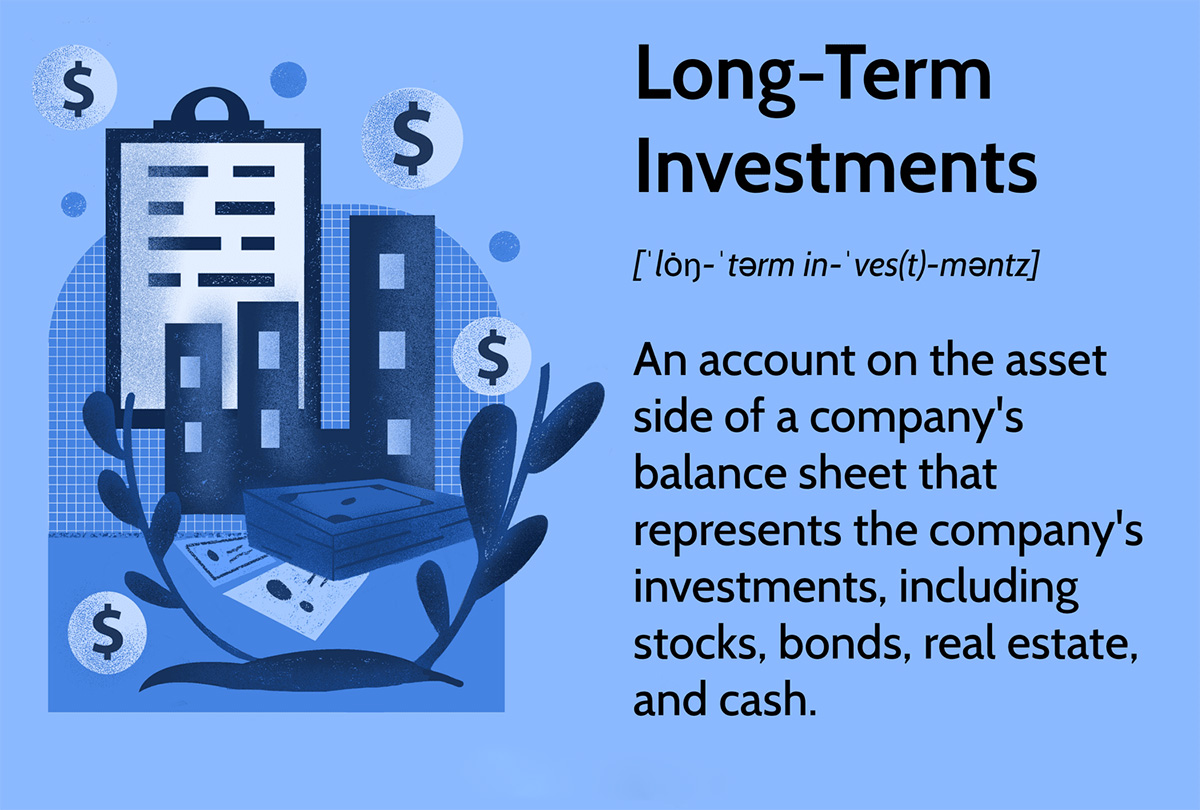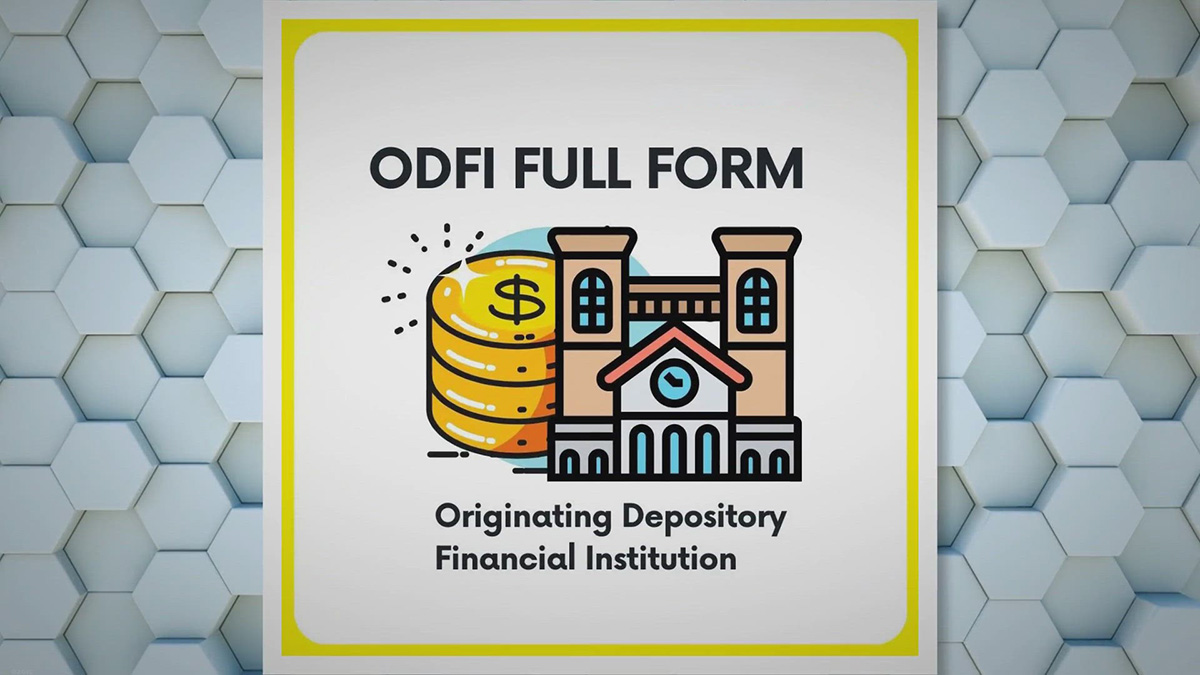

Finance
What Does LTF Mean In Banking
Published: October 11, 2023
Discover the meaning of LTF in banking and its significance in finance. Learn how it impacts the financial industry and find out its implications for your financial planning.
(Many of the links in this article redirect to a specific reviewed product. Your purchase of these products through affiliate links helps to generate commission for LiveWell, at no extra cost. Learn more)
Table of Contents
Introduction
Welcome to the world of banking, where acronyms and jargon reign supreme. In the realm of finance, it’s common to encounter terms that may leave you scratching your head. One such term that often pops up in banking discussions is LTF. But what exactly does LTF mean in banking? Allow me to shed some light on this acronym.
LTF stands for “Long Term Financing.” It refers to a type of loan or financing agreement in which the repayment period is extended over a relatively longer duration compared to traditional short-term loans. While the specific duration may vary depending on the context and the financial institution involved, LTF loans generally have a repayment period of more than five years.
Many banks and financial institutions offer LTF options to businesses and individuals as a way to provide them with the necessary capital for long-term investments or projects. Whether it’s funding a new business venture, purchasing real estate, or financing a large infrastructure project, LTF in banking plays a crucial role in facilitating economic growth and development.
Now that we have a basic understanding of what LTF means in banking, let’s delve deeper into its purpose, benefits, drawbacks, and explore a few examples for a clearer picture of its significance in the financial world.
Definition of LTF in Banking
In the realm of banking, LTF refers to Long Term Financing. It is a type of loan or financing arrangement offered by financial institutions to individuals and businesses for long-term investment or funding needs. Unlike short-term loans that have a repayment period of typically a few months to a couple of years, LTF loans have an extended repayment period of more than five years.
LTF in banking is designed to provide borrowers with the necessary capital to undertake projects that require substantial financial resources over an extended period. These projects may include business expansion, infrastructure development, real estate acquisition, capital investments, and more. By offering longer repayment terms, LTF enables borrowers to manage their cash flow more effectively and make smaller, more manageable installment payments over an extended period.
Financial institutions extend LTF options to both individuals and businesses. Individuals may seek LTF to finance major life events such as purchasing a home, funding higher education, or consolidating debt. For businesses, LTF can provide the means to launch a new venture, expand operations, upgrade machinery or equipment, or undertake extensive research and development.
It’s important to note that the specific terms and conditions of LTF in banking may vary from one institution to another. However, typical features of LTF loans include fixed interest rates, predetermined repayment schedules, and often require collateral or security to mitigate the lender’s risk.
Overall, LTF in banking offers borrowers the flexibility and resources needed to pursue long-term financial goals and investments. The extended repayment period gives borrowers ample time to generate revenue or returns from their investments, ensuring a sustainable approach to financial growth and stability.
Purpose of LTF in Banking
The primary purpose of LTF in banking is to provide individuals and businesses with access to long-term capital for various investment and funding needs. It serves as a financial tool that enables borrowers to undertake projects or ventures that require substantial financial resources over an extended period.
One of the key purposes of LTF in banking is to support economic growth and development. By offering long-term financing options, banks and financial institutions contribute to the expansion and development of businesses and infrastructure. LTF loans allow businesses to invest in new technologies, expand their operations, and create job opportunities. For infrastructure projects, such as building roads, bridges, or power plants, LTF funding plays a crucial role in improving public services and stimulating economic growth.
LTF in banking also serves the purpose of facilitating major life events for individuals. Whether it’s buying a home, funding higher education, or consolidating debt, LTF loans provide individuals with the necessary financial resources to achieve their long-term goals. It allows them to make large purchases or investments and repay the loan over an extended period, making it more manageable and affordable.
Another purpose of LTF in banking is to promote stability and financial security. By providing borrowers with long-term financing options, it allows for better financial planning and management. Businesses can make strategic decisions and investments based on the availability of long-term capital. Individuals can manage their cash flow efficiently and plan for the future with a clear understanding of their long-term financial commitments.
Additionally, LTF in banking aims to mitigate risk for both lenders and borrowers. From the lender’s perspective, having a longer repayment period reduces the risk of default and increases the likelihood of receiving full repayment. For borrowers, LTF loans offer the advantage of lower monthly payments compared to shorter-term loans, which reduces the risk of financial strain and default.
Overall, the purpose of LTF in banking is to provide individuals and businesses with the means to pursue their long-term financial goals and investments. It supports economic growth, promotes stability and financial security, and mitigates risks for both lenders and borrowers.
Benefits of LTF in Banking
LTF in banking offers a range of benefits to both borrowers and lenders. Let’s explore some of the key advantages:
- Access to Capital: One of the primary benefits of LTF is that it provides individuals and businesses with access to a substantial amount of capital. This allows borrowers to undertake projects, make investments, or pursue opportunities that would otherwise be financially challenging or impossible.
- Flexible Repayment Terms: LTF loans offer borrowers the advantage of longer repayment periods. This flexibility allows borrowers to make smaller monthly installment payments, making it easier to manage cash flow and reduce financial strain.
- Lower Interest Rates: Due to the longer repayment period associated with LTF loans, lenders often offer lower interest rates compared to shorter-term loans. This can result in significant interest savings for borrowers over the life of the loan.
- Stimulate Economic Growth: By providing long-term financing options, LTF in banking can contribute to economic growth and development. Businesses can use the capital to expand operations, invest in new technologies, and create job opportunities. Infrastructure projects funded through LTF can improve public services and stimulate economic activity in the surrounding areas.
- Improved Financial Planning: LTF loans allow for better financial planning and management. With a clear understanding of long-term repayment obligations, borrowers can plan their budgets and make informed decisions about future expenditures and investments.
- Opportunity for Long-Term Investments: LTF in banking enables individuals and businesses to pursue long-term investments. Whether it’s purchasing real estate, funding education, or launching a new business venture, the longer repayment period provides the opportunity to generate returns or revenue over time.
- Risk Mitigation: LTF loans can help mitigate risk for both lenders and borrowers. The longer repayment period gives borrowers time to generate revenue or returns from their investments, reducing the risk of default. For lenders, the extended timeframe allows for a more stable and predictable cash flow.
These benefits highlight the importance of LTF in banking as a valuable tool for providing access to capital, promoting economic growth, and offering flexibility and stability to borrowers. Whether it’s for individuals pursuing major life events or businesses undertaking ambitious projects, LTF loans play a crucial role in fulfilling long-term financial goals.
Drawbacks of LTF in Banking
While LTF in banking offers numerous benefits, it’s important to acknowledge and consider the potential drawbacks associated with this type of financing. Here are some of the key drawbacks to be aware of:
- Higher Total Interest Paid: One significant drawback of LTF loans is that, due to the extended repayment period, borrowers may end up paying more in total interest compared to shorter-term loans. The lower monthly payments may be more manageable, but the overall interest accrued over time can be substantial.
- Long-Term Commitment: LTF loans require a long-term commitment from borrowers, which means they are tied to the loan for an extended period. This may limit the borrower’s flexibility to pursue other financial options or make significant changes to their financial situation.
- Asset Depreciation: The extended repayment period of LTF loans may result in the borrower owning assets that have depreciated significantly. This can be particularly relevant for loans related to purchases such as vehicles or equipment, which can lose value over time.
- Potential for Overborrowing: The accessibility of long-term financing may lead some borrowers to overextend themselves financially. Without proper financial planning and assessment of repayment capabilities, borrowers may take on more debt than they can comfortably manage.
- Exposure to Interest Rate Fluctuations: LTF loans typically come with fixed interest rates. However, if the loan has a variable interest rate, borrowers are exposed to potential fluctuations in interest rates. This can result in increased monthly payments and added financial uncertainty.
- Collateral Requirements: Financial institutions often require collateral or security to mitigate their risk when offering LTF loans. This means borrowers may need to pledge valuable assets, such as property or investments, to secure the loan. In the event of loan default, the lender has the right to seize and sell the collateral.
It’s crucial for borrowers to carefully evaluate the potential drawbacks of LTF in banking and assess their own financial situation and needs. It’s advisable to seek professional advice and ensure that the benefits of long-term financing outweigh the associated drawbacks.
Despite these drawbacks, LTF in banking continues to be a valuable option for individuals and businesses seeking long-term capital. It’s essential to consider these factors and make informed decisions when choosing the appropriate financing option for specific circumstances.
Examples of LTF in Banking
Let’s explore a few examples of how LTF is utilized in the banking industry:
- Business Expansion: A successful manufacturing company wants to expand its operations by building a new state-of-the-art facility. To finance this expansion, the company seeks an LTF loan. The extended repayment period allows the business to make affordable monthly payments while generating additional revenue from the expanded operations.
- Real Estate Investment: An individual wants to purchase a commercial property to start their own restaurant. However, they do not have sufficient funds to make the purchase outright. By securing an LTF loan, the individual can make a down payment on the property and repay the loan over an extended period using the restaurant’s revenue.
- Infrastructure Development: A local government aims to improve the transportation infrastructure in a growing city. They secure an LTF loan from a financial institution to fund the construction of new roads and bridges. The extended repayment period allows the government to allocate the necessary funds for the project while spreading the financial burden over time.
- Higher Education Funding: A student dreams of pursuing a master’s degree at a prestigious university but does not have the means to cover the tuition expenses. By obtaining an LTF loan, they can finance their education and repay the loan over an extended period, taking advantage of future career opportunities to repay the debt.
- Large-Scale Manufacturing Equipment: A manufacturing company needs to upgrade its machinery to improve efficiency and productivity. By securing an LTF loan, the company can invest in new equipment with a longer repayment period, allowing them to generate revenue and offset the cost of the loan over time.
These examples highlight the versatility of LTF in banking. Whether it’s financing business expansions, real estate investments, infrastructure development, higher education, or capital-intensive projects, LTF loans provide borrowers with the necessary financial resources to pursue their goals over an extended period.
It’s important to note that these examples are for illustrative purposes, and the specific terms, interest rates, and requirements for LTF loans may vary depending on the financial institution and the borrower’s creditworthiness. It’s crucial for borrowers to carefully evaluate their needs and assess the appropriateness of LTF in their specific circumstances.
Conclusion
In conclusion, LTF in banking, which stands for Long Term Financing, plays a significant role in the financial world by providing individuals and businesses with access to long-term capital for various investment and funding needs. With extended repayment periods, LTF loans offer flexibility and affordability, allowing borrowers to pursue projects, make investments, and achieve long-term financial goals.
The benefits of LTF in banking are numerous. It provides borrowers with access to substantial capital, offers lower interest rates, stimulates economic growth, improves financial planning, and mitigates risks for both lenders and borrowers. LTF loans empower individuals to fulfill major life events, such as purchasing a home or funding education, while enabling businesses to expand operations, invest in new technologies, and create jobs.
However, it is important to consider the potential drawbacks of LTF loans, such as higher total interest paid, long-term commitment, potential asset depreciation, the risk of overborrowing, exposure to interest rate fluctuations, and collateral requirements.
Ultimately, the decision to pursue LTF in banking depends on a careful evaluation of individual circumstances, financial goals, and risk appetite. Seeking professional advice and conducting thorough research is crucial to make informed decisions that align with long-term financial objectives.
In the dynamic landscape of finance, LTF in banking continues to be a valuable tool that facilitates economic growth, supports investments, and provides borrowers with the means to achieve their aspirations. By understanding the definition, purpose, benefits, drawbacks, and examples of LTF in banking, individuals and businesses can navigate the financial landscape and make informed choices to secure their long-term financial success.














